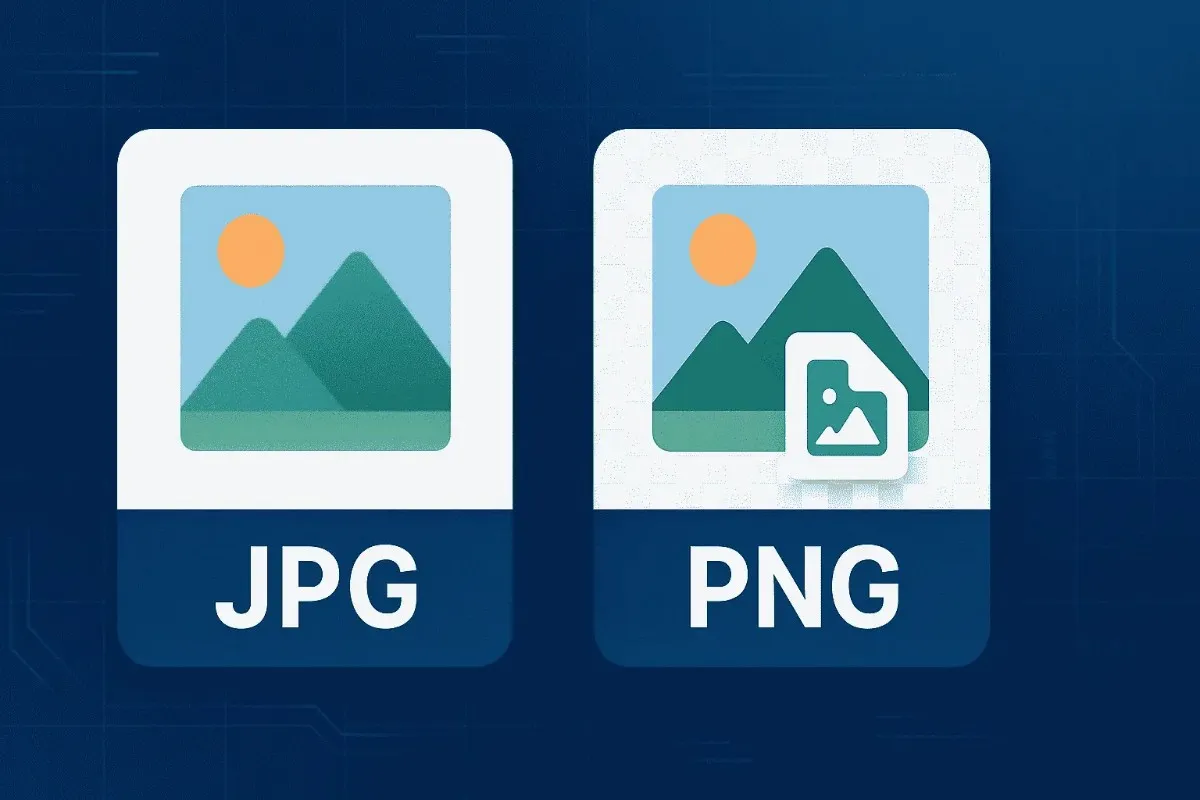When you are uploading your signature for various applications, the image format you choose can make a big difference. There are many image formats right now but JPG and PNG are the two most common options. But they serve for totally different purposes. In this blog post we will discuss when JPG format should be used and when PNG format should be used.
Understanding JPG and PNG File Formats
Choosing the correct image format is b=very important especially when you are applying for government exams or services. JPG and PNG each have unique characteristics that make them suitable for specific purposes. Let’s break them down to help you decide.
What is a JPG?
JPG (Joint Photographic Experts Group) is also known as JPEG. It is recognized for its lossy compression, meaning some data is discarded to reduce the file size. This type of file is good for storing large amounts of data, because this type of file size is very less compared to other image formats.
JPG files are commonly used for photographs or images with complex colors because they balance quality and size. They work seamlessly on websites and are perfect for quick uploads, but there’s a trade-off in detail—zoom in, and you may notice some blurring or pixelation.
For a deeper understanding of this format, you can refer to this article from Adobe.
What is a PNG?
The PNG stands for Portable Network Graphics, it offers a different approach. PNG uses lossless compression, meaning no data is lost in this format during the saving process. Thus the image quality is maintained and no quality degradation happens.
One standout feature of PNG is that it supports transparency. If you have ever seen a logo or graphic on any website with a clear background then it is likely that it is in PNG format. This feature makes it perfect for graphics with fine details or for logos.
If you want to explore more about PNG and its uses, check out this guide by Adobe.
Key Differences Between JPG and PNG
Here’s how JPG and PNG stack up against each other in critical areas:
- File Size: JPG files are smaller than PNG due to lossy compression.
- Compression Method: JPG discards some details to obtain smaller size, whereas PNG retains every bit of information.
- Image Quality: PNG files offer sharper visuals, especially for text or detailed graphics. In contrast, JPGs may lose clarity when zoomed in.
- Transparency Support: PNG is the clear winner for images requiring transparent areas; JPG does not support transparency at all.
For a comprehensive comparison, you might find this article by TechSmith insightful.
Each format has its unique features, but understanding these differences can help you to select the correct file format for your work purposes. If precision and professionalism is required then PNG is good. On the other hand, JPG is optimal for speedy uploads and conserving storage.
FAQ
- Is PNG better quality than JPG?
Ans: Yes, PNG gives better quality than JPG because it use lossless compression, meaning no data is lost in this format. - What is the full form of JPG and PNG?
Ans: JPG full form is Joint Photographic Experts Group and PNG full form is Portable Network Graphics. - What prints better, JPG or PNG?
Ans: PNG is best for printing, because it do not lose quality. - What is PNG used for?
Ans: PNG is best for printing, logo design, graphics design works.
Hi, my name is Gourav Karmakar and i am a content writer. Pan Card Photo Resize is my passion project where users can access different types of tools for free.


1 thought on “JPG vs PNG: Which Format Should You Choose?”